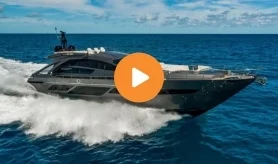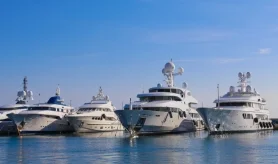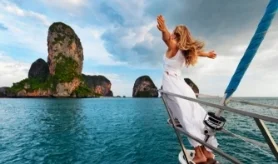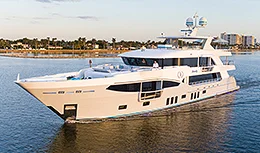- Alaskan Yachts
- Azimut Yachts
- Back Cove Yachts
- Beneteau Yachts
- Benetti Superyachts
- Bertram Yachts
- Boston Whaler
- Broward Yachts
- Buddy Davis Sportfish
- Burger Yachts
- Cabo Yachts
- Catamarans
- Carver Motoryachts
- Center Console
- Chris-Craft Yachts
- Cruisers Yachts
- DeFever Trawlers
- Dufour Sailboats
- Fairline Yachts
- Feadship Yachts
- Ferretti Yachts
- Formula Yachts
- Fountaine Pajot Cats
- Grady-White
- Grand Banks Trawlers
- Hargrave Yachts
- Hatteras Yachts
- Hinckley Picnic Boats
- Horizon Yachts
- Hydra-Sports
- Intrepid Boats
- Jarrett Bay Sportfish
- Jeanneau Yachts
- Kadey-Krogen Trawlers
- Lazzara Yachts
- Lekker Boats
- Luhrs Sportfish
- Marlow Yachts
- Maritimo Yachts
- Marquis Yachts
- Mazu Yachts
- McKinna Motoryachts
- Meridian Yachts
- Midnight Express
- MJM Yachts
- Mochi Craft
- Neptunus Motoryachts
- Nordhavn Trawlers
- Nordic Tugs
- Numarine Yachts
- Ocean Alexander Yachts
- Ocean King
- Offshore Yachts
- Outer Reef
- Oyster Sailing Yachts
- Pacific Mariner Yachts
- Palmer Johnson Yachts
48′ Fairline Phantom 2007
![]()
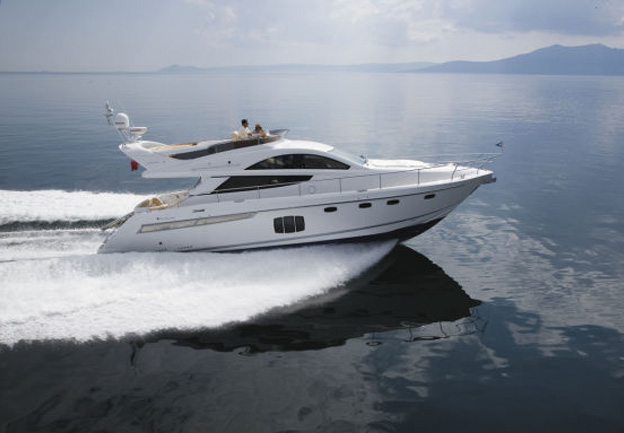
Source: Capt. Patrick Sciacca, Power & Motoryacht Magazine
My introduction to serious wheel time at PMY was onboard a Fairline Phantom 43 back in 2000. She was our company boat that year, and I was running numbers with senior editor Capt. Ken Kreisler. Up to this point my boating background had been primarily focused on sportfishermen, and I remember being awed by the 43’s high-gloss wood, the volume of her interior, and just how different to me she was.
I also remember what an adventure it was. I had a great time throttling up her Volvo Penta diesels and piloting her up the Hudson River through a summer thunderstorm, dodging seemingly beach ball-size raindrops. She was a nimble vessel and an impressive welcome to the world of boat testing.
Seven years later—and with a few more boats in my wake—I found myself back where it all started, at the helm of a Fairline Phantom. This one, a 48-footer, is the latest from the English builder’s line of sleekly styled, family-friendly, flying-bridge cruisers. And unlike my earlier rain-soaked experience, my day onboard the 48 was filled with high skies, a warm South Florida summer sun (at least 150-percent humidity), and checkerboard-flat seas.
Remembering the 43’s fine joinerwork and exquisite cabinetry, I was curious to see what had changed and what had remained the same on the newest Phantom. I stepped through the 48’s easy-sliding, stainless steel and glass cockpit door, and my eyes filled with the richness of gleaming, deeply stained American cherrywood. (White oak is also available and popular on the European versions of this boat.) Precisely grain-matched wood contrasted with the optional ivory leather settee to port and U-shape seating with hi-lo table to starboard. Fairline’s top-level craftsmanship was obviously still there, and perhaps even better.
One noticeable change was the overall feel of the interior. It seemed that the radiuses and curves I remember from the 43 have given way to linearity. Straight lines and 90-degree angles now dominate in the aforementioned settees and the cabinets, both here and in the galley down. The lack of curves also provides more usable floor space and, in turn, a more capacious feel, enhanced by that large sliding-glass door, cabin-length side windows, and dramatically raked front window. The resulting 360-degree view will come in handy should you need or desire to operate the 48 from her lower helm.
As for that galley, I’ve been on several vessels recently that have had the galley up, enabling the cook to interact with guests. The 48 defies that trend; Fairline opted for the traditional galley down (the Phantom 50 offers the galley up), and it works. Just a few steps from the bridge deck, the fully equipped space is bathed in light by both the overhanging front window and those massive side windows, yet it’s within conversational distance of the saloon and helm. Such conversation is made easier by the fact that the 48 is quiet. My decibel readings at the upper helm topped out at 77 dB-A (65 is the level of normal conversation).
Part of the reason for that is acoustical insulation, but part is also her solid build. Fairline starts with a hand-laid solid-fiberglass bottom, then adds a grid-type backbone of full-length foam-cored stringers and transversals spaced about every two and a half feet. The hull and deck are joined both chemically and mechanically and fiberglassed with a three-inch-wide overlap of cloth and resin. The result is a structure Fairline calls a monocoque and I call rock solid.
The sea offered us no place to test that judgment. Her Bernard Olesinski-designed, modified-V hull, which features 18 degrees of deadrise at the transom, purposefully and softly sliced through the flat, cobalt-blue water while her twin 575-hp straight-shaft Volvo Penta diesels ramped up to 2520 rpm, within 20 rpm of their rating. At this speed of 36.5 mph, our test boat registered 0.61 mpg on a 60-gph burn, which with 440 available gallons works out to a 241-statute-mile range.
Her good turn of speed complements her easy handling. I was able to turn the 48 within about two boat lengths at WOT with minimal effort, thanks in part to her power-assisted SeaStar steering and fin-shape Clements rudders. In high-speed turns, the 48 offers slight to moderate heel and a loss of only about 100 rpm. Coming out of them, she was quick to recover.
Her open flying bridge (the optional bimini top was down) provided plenty of exhilaration, but backing into a slip, I was unable to see the starboard-side aft quarter due to the large seating area on the overhang. If I stretched my neck towards the port-side teak steps leading back to the cockpit, I could catch a view of the port corner of the teak swim platform. But anyone backing in will need a cockpit camera or a spotter calling out the distance. That said, I did quite a few close-quarter simulations, from spinning to backing down, and found the 48 to be quick on her feet.
As a set of typical South Florida summer thunderstorm clouds approached, recollections of lightning strikes and those huge raindrops suddenly returned, so it was time to call it a day. Admittedly, conditions on this test day were quite different from those during my first experience on a Phantom. Yet much remained the same. This boat was fast, stylish, eye-catching, roomy, and chockful of artisanal-grade joinerwork. With a pedigree like that, the 48 should have no problem making your short list of top-notch cruisers.
All boats have a base price, which can vary from a little to a lot, depending on what optional equipment you add. I wondered what the options list on our 48 looked like and how it affected the final tally. Turns out that Hull No. 3 (which is actually Hull No. 1 in the United States) sported no fewer than 22 options. They ranged from the obvious extensive Raymarine electronics package and white bimini top to the less-noticeable six-piece lead-crystal highball set and light-mast upgrade. So how far does her base price grow with all those goodies? Try $84,565. And figure on another $18,950 for prep and make ready. But hey, you get what you pay for.—P.S.
Boat Specifications: 48′ Fairline Phantom 2007
Boat Type: Cruiser
Standard Power: 2/575-mhp Volvo Penta D9 diesel inboards
Optional Power: none
Length Overall (LOA): 47’7″ (w/ swim platform)
Beam: 14’8″
Draft: 3’8″ (unloaded)
Weight: 30,700 lbs.
Fuel Capacity: 440 gal.
Water Capacity: 132 gal.
Standard Equipment: aft cockpit covers; windlass; 8-hp Side Power bow thruster; 4-burner EuroKera electric cooktop; Lenco trim tabs; high-gloss American cherrywood or white oak; microwave; 7-kW Onan genset; Isotherm refrigerator w/ integral icebox; Delta anchor; teak sole, flying-bridge steps, bathing platform; 19″ Lava LCD TV in saloon; mooring warps; 2/VacuFlush MSDs; 42-piece s/s cutlery set and 24-piece melamine dinner service, and 6-piece polycarbonate glass set w/ Fairline crest; Bose 3-2-1 radio/CD/DVD; Raymarine ST60 tridata w/ flying-bridge repeater; freshwater washdown for anchor locker and transom
Test Engines: 2/575-mhp Volvo Penta diesel inboards
Transmissions / Ratio: ZF/1.75:1
Props: 24×34 4-blade manganese bronze
Steering: Sea Star hydraulic w/ power assist
Controls: Volvo Penta single-lever electronic
Optional Equipment On Test Boat: Isotherm in-sole freezer; flying-bridge refrigerator; Glendinning Cablemaster; De Dietrich flying-bridge electric grill; 15″, 19″, and 10″ Lava LCD TVs in forepeak, master, and guest staterooms, respectively; Splendide Comb-o-matic 6200 washer/dryer; blue LED lighting; Raymarine electronics package w/ 2/E120 plotters, 24″ radome, 2/240 VHFs, and 2/ST60002 SmartPilots; s/s anchor upgrade; ivory leather upgrade for saloon settee, armchair, and lower helm seat; flying-bridge ice maker; 24-piece porcelain dinner service w/ Fairline crest; 6-piece lead-crystal highball set; custom interior decor; light-mast upgrade to accommodate radar; coachroof cushions w/ nonabsorbent foam
